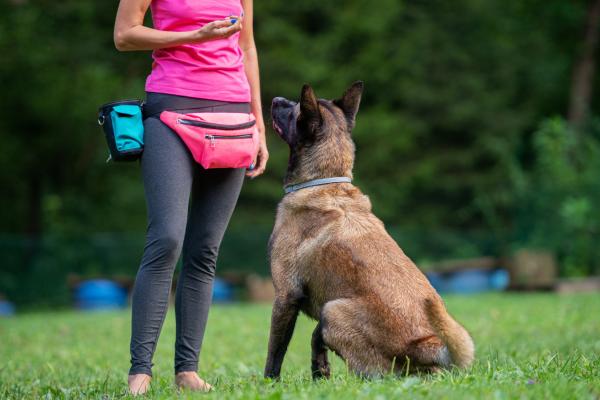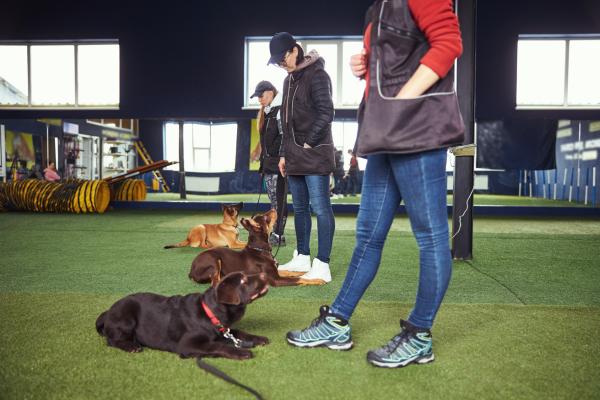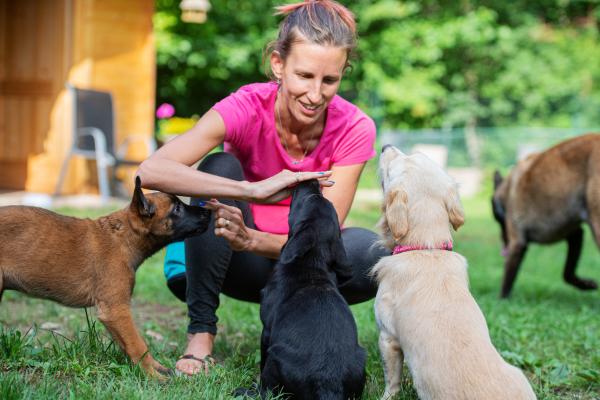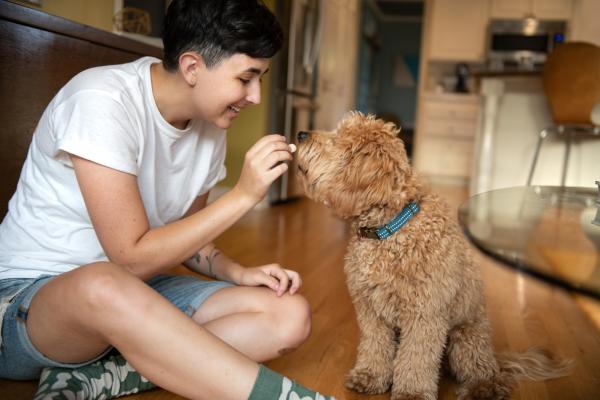Introduction
Introduction to Puppy Training
Ah, the joy of bringing a new puppy into your home is truly unparalleled. These adorable furballs not only bring happiness but also a good amount of responsibility. So, buckle up for one of the most rewarding journeys you’ll ever embark on: puppy training. Understanding the essentials of training can turn the adorable yet unruly little creature into a well-mannered member of your family.

Why Training Your Puppy Is Essential
Training isn’t just for show; it’s absolutely indispensable. A well-trained dog is easier to manage, and let’s face it, no one wants a dog that they can’t control. Think of it this way: training your dog is akin to teaching a child manners. This socialization isn’t just for your convenience; it actually contributes to your pet’s overall well-being. Research from the American Veterinary Medical Association underlines the critical importance of early-life training and socialization for long-term behavioral health.
What New Dog Owners Can Expect
If you’ve never had a puppy before, you’re in for an experience filled with challenges and rewards. Yes, you’ll have sleepless nights, a chewed-up pair of favorite shoes, and maybe even a soiled rug or two. But the endless cuddles, the wagging tail at the end of a long day, and the undying loyalty make it all worthwhile.
Overview of What The Article Will Cover
This article will guide you through the labyrinth of puppy training. From understanding why early training is crucial to navigating advanced training techniques, we’ll cover it all. Don’t worry; we’ll make this journey as paw-sible as can be!
The Basics of Puppy Training
Why Start Training Early
Don’t procrastinate when it comes to training your puppy. Early training sets the groundwork for everything that follows. Dogs are learning all the time, so every interaction serves as a teaching moment. According to studies by Stanley Coren, a professor of psychology at the University of British Columbia, the earlier you start, the easier it is to shape desirable behaviors.
Puppy Development Stages
Understanding puppy development stages gives you an upper hand in training. Puppies go through several critical phases from birth to adulthood, and each stage comes with its unique training demands. The ‘Socialization Stage’ between 8-12 weeks, for example, is perfect for basic obedience training and socialization. This is the phase where they’re most receptive to new experiences.

Choosing the Right Training Method
Positive Reinforcement
Positive reinforcement is currently the gold standard in dog training. Offering treats, verbal praises, or even belly rubs right after your puppy exhibits good behavior makes it more likely for the action to be repeated. The American Kennel Club has fantastic resources that delve into the nitty-gritty of positive reinforcement.
Clicker Training
You might have seen trainers with a tiny device emitting a ‘click’ sound. This is the clicker, a highly effective tool for immediate positive reinforcement. The click marks the good behavior, telling your dog instantly that they’ve done something right.
Alpha Dog Training
While it’s a more traditional method based on establishing yourself as the dominant or “alpha” figure, this technique is a bit controversial. It can be intimidating for the dog and may lead to stress and anxiety. Experts like Dr. Ian Dunbar have argued that positive reinforcement should be the main focus of modern dog training.
The Choice Depends On Your Dog
Choosing a training method is like picking a school for your child; you want the best fit. Some dogs respond better to certain techniques than others. Your choice should be based on your dog’s personality, learning speed, and your own training capabilities.

Preparing for Training
Setting Up a Training Environment
Imagine trying to read a complicated book in the middle of a rock concert. Tough, right? Similarly, your puppy needs a conducive environment to learn effectively. A quiet space with minimal distractions, like a fenced yard or an empty room, is ideal for focused training sessions.
Removing Distractions
Before you get started, remove any distractions that could hamper your puppy’s focus. Turn off the television, move other pets to a different room, and stash away any loud or flashy toys. You want your puppy to have laser-like focus on the task at hand.

Training Tools You Will Need
Clickers
If you’re inclined towards clicker training, you’ll need to get your hands on a quality clicker. You can find a variety of clickers at your local pet store or online. Make sure it produces a clear, audible click that your dog can hear from a distance.
Treats
Treats act as positive reinforcers. Stock up on small, delicious dog treats that you can dispense easily. Choose treats that are healthy and ideally, low in calories, so you don’t end up overfeeding your pup.
Leash and Collar
Invest in a sturdy, comfortable leash and collar set. It should be secure enough to control your puppy but comfortable enough not to cause any discomfort or harm. Websites like Chewy offer a plethora of options to suit every breed and size.
Toys
Toys serve as both a distraction and a training tool. Use soft, chewy toys for bite inhibition training and puzzle toys to improve cognitive abilities. Just make sure they’re safe and appropriate for your puppy’s age and size.
Puppy Training Pads
Especially useful in the early stages of toilet training, these pads can be a godsend. Place them in strategic locations around your home and gradually phase them out as your puppy gets better at controlling their bladder.
Core Training Elements
Basic Commands Every Puppy Should Know
Begin with the basics like “Sit,” “Stay,” “Come,” “Leave it,” and “Heel.” These are non-negotiables and are essential for any dog’s repertoire. Take them one at a time and don’t rush through. Consistency and repetition are your best friends here.
Toilet Training
Toilet training is another critical area that requires your undivided attention. Timing is everything. Make sure you take your puppy outside at regular intervals, particularly after meals, playtime, and naps. Use a command like “Go potty” and immediately reward them when they do the deed.
Bite Inhibition Training
Bite inhibition training is not only for your sake but also
for your puppy’s. Dogs that don’t learn bite inhibition may find themselves in troublesome situations later on. Divert biting to toys and offer rewards for gentleness during play.

Beyond The Basics
Socialization
Good behavior extends beyond the confines of your home. Once your pup is comfortable with the basics, it’s time to introduce them to the world. Socialization reduces fear and aggression, making trips to the vet, park, or anywhere else far more enjoyable.
Advanced Training Techniques
Once your dog has mastered the basics, it’s time to level up. This can include agility training, advanced obedience, or even scent detection. Websites like Dog Training Central have specialized courses that can take your dog’s training to the next level.
Summary
Review of Key Points
From understanding the importance of early training to selecting the best training methods and mastering basic commands, we’ve covered quite a ground. Remember, consistency and positivity are your key tools in this rewarding journey.
Recommended Products for Puppy Training
I would highly recommend clickers for anyone considering clicker training. Additionally, a variety of treats will keep your dog interested and motivated. Websites like Petco offer a great range of high-quality training aids.
What to Expect as Your Puppy Matures
As your puppy grows into an adult dog, expect their learning capacity to expand. New challenges and advanced training methods can be introduced to keep them engaged and mentally stimulated.
Frequently Asked Questions
You can start as early as 8 weeks. The earlier, the better!
Ideally, 15-20 minutes but it can vary based on your puppy’s attention span.
Switching methods might be necessary. Your current approach may not be clicking with your pup’s learning style.
Absolutely not. It might take longer, but you can always teach an old dog new tricks.
Inconsistency, harsh punishment, and setting unrealistic goals are common pitfalls.
In this comprehensive guide, we’ve laid out the A to Z of puppy training. So go ahead, take it one step, one command, one treat at a time. Your journey from bewildered puppy owner to proud parent of a well-trained dog starts here.






